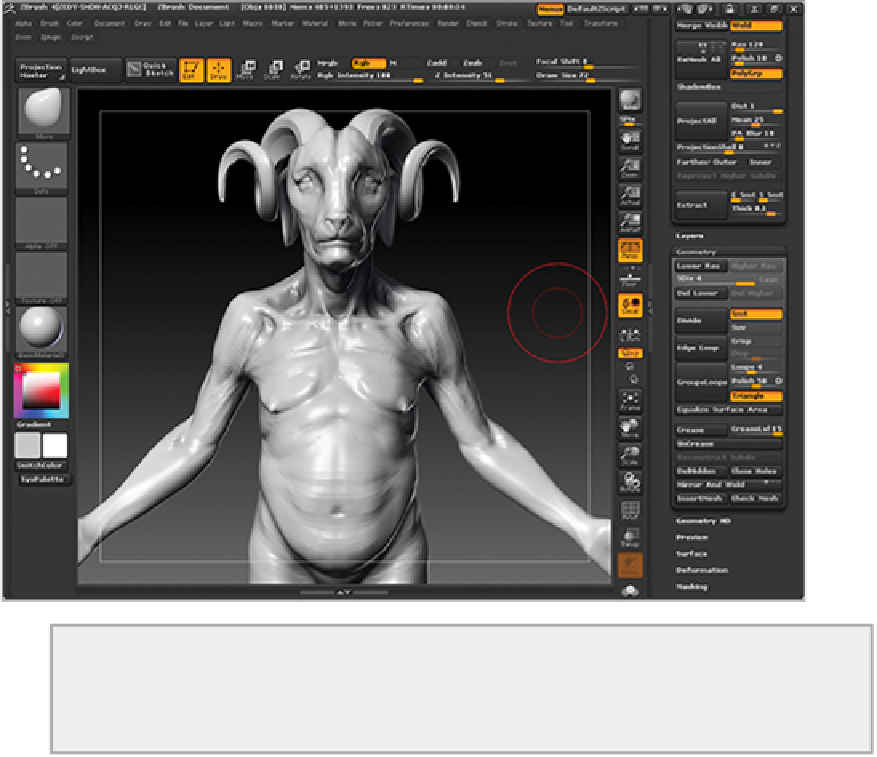Graphics Programs Reference
In-Depth Information
At this stage, I check the figure proportions using the transpose line as a measuring tool. The
figure is close to six heads tall and with the horns added is starting to look a little too heavy.
I adjust the body-to-head ratio so the character is approximately seven heads tall. To see this
process in detail, please see the narrated video on the DVD or download files.
Refining the Legs
At this point, I decide to change the overall structure of the legs. I will break the normal human leg forms and
alter the character's legs to be more of an ungulate leg formation. Ungulates, which means “being hoofed” or
“hoofed animal,” are several groups of mammals, most of which use the tips of their toes, usually hoofed, to
sustain their whole body weight while moving.
Figure 8-88
shows a bit of reference for this kind of leg. This
etching is from the classic animal anatomy book
Atlas of Animal Anatomy for Artists
by W.
Ellenberger
,
H. Dittrich, H. Baum (
Figure 8-89
). This is one of my favorite animal anatomy topics and I highly recom-
mend it as a low-cost and highly informative reference book. The following steps detail how I convert this
character's leg formation from a human, or plantigrade structure to an ungulate, or hoofed-leg formation.
It is always good practice to try doing animal sculpture from reference like this. By careful study of living
animal anatomy, you can create a better base of knowledge to pull from for your fantasy characters.
Figure
8-90
shows an exquisite equine sculpture by artist Hardh D. Borah. This figure was created in ZBrush and
3D printed.
1.
Isolate the legs from the body with transpose masking (
Figure 8-91
)
.

Search WWH ::

Custom Search